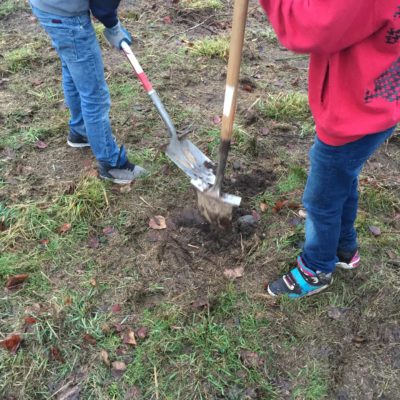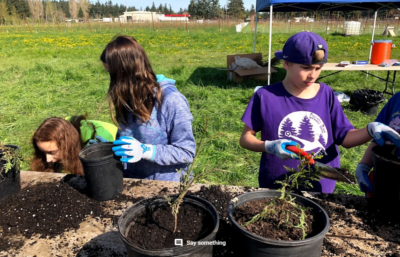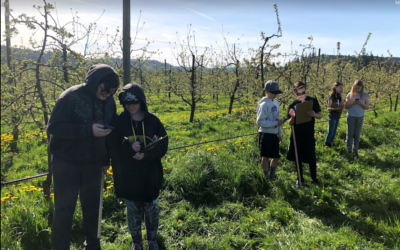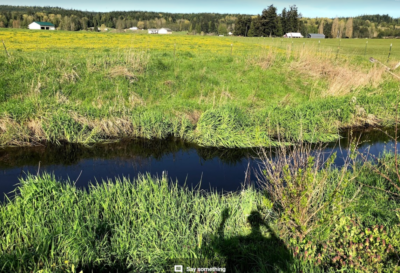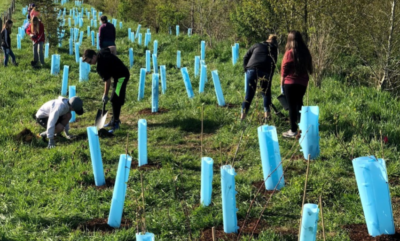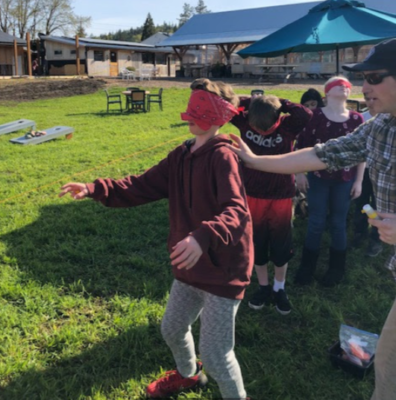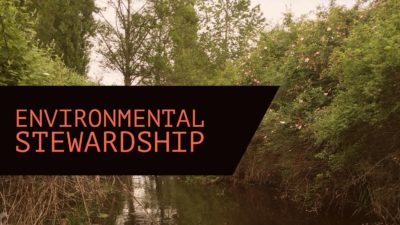 When I first started working at Chimacum Middle School I noticed that Chimacum Creek ran right by the main campus. As a matter of fact, there was an old fish hatchery that hadn’t been used in years on school property. Turns out it had been used by high school students years before I started working at the district. It was a great program. With all the laws around raising salmon in hatcheries that old hatchery could no longer hatch salmon but it could be used to raise trout. Who knows, maybe someday.
When I first started working at Chimacum Middle School I noticed that Chimacum Creek ran right by the main campus. As a matter of fact, there was an old fish hatchery that hadn’t been used in years on school property. Turns out it had been used by high school students years before I started working at the district. It was a great program. With all the laws around raising salmon in hatcheries that old hatchery could no longer hatch salmon but it could be used to raise trout. Who knows, maybe someday.
Fast forward 20 years later and I’m still working at Chimacum Middle School and for the past 18 years I been having my 6th graders learn about the creek, its ecosystems, the water quality, and environmental stewardship. Having a natural resource like that right next to my school, only a few minutes walk right from my classroom, was too good to pass up.
I have crafted some great learning experiences for students. I have evidence in the form of past students who come back to visit remarking about how much they enjoyed our creek work. I have benefitted from the talents and wisdom of others over the years. I have been able to provide more varied experiences for my students by reaching out and connecting with other teachers as well as experts. Early on I was lucky enough to learn about a local agency, the North Olympic Salmon Coalition (NOSC), that not only did restoration work in our area but they also worked to educate young people. For most of the 18 years that I’ve been having my 6th graders learn about their local watershed and salmon and the like, NOSC has been working with us.
From the beginning, NOSC restoration stewards have come into my 6th grade classes and presented to students about their restoration projects and how their work has helped salmon in our creek. One way NOSC got students to help was to take them tree planting. Since NOSC had to connect with local land owners to get access to the creek, because the creek goes through private properties and farms, they were able to choose locations where we could take ourkids. NOSC provided buses when needed, volunteers, materials in the form of shovels, gloves, and native vegetation. NOSC made our project much better than what I was planning on my own. And by having a local partner it made my project more attractive to grantors!
I, and therefore my students, have benefitted from our connection to NOSC. And year after year even when one restoration steward moved on and another came on board, NOSC’s work with my students continued and even improved! NOSC had a built instructure to make share outgoing stewards informed incoming stewards of all aspects of their work, including their education outreach with schools. As a classroom teacher I have greatly appreciated that because it allowed me to have a consistent program as part of my curriculum.
Students were already tree planting when NOSC stewards introduced them to macroinvertebrate sampling. Part of determining a creek’s biological integrity was using indicator species such as benthic macros or the underwater bugs that live clinging onto rocks in creeks and streams. Turns out that there are species that are very sensitive to pollution and they don’t do well in polluted sections of streams. So NOSC had my students identifying benthic macros and using biological integrity indexes to generate a score for our creek! It was a great addition.
So after creek history and restoration information, tree planting, and macro sampling we had a few years of watershed activities using watershed models. Those were fun additions as well. Last year NOSC improved their 6th program and even expanded it to the 7th grade!
We kept the creek history and restoration info and the macro sampling, those are like staples of my curriculum now, but NOSC updated their tree planting experience for our students. Our tree planting field trips went from a one to two hour whole grade experience to one class period walking trips to creek access points close to the school. We would take each of 6th grade classes during their Science period and have them dig holes and plant as many trees as they could. Last year, NOSC stepped that up a notch. NOSC worked with a nearby farm, Finnriver Farm, and used their creek access to have Chimacum students plant trees there in 6th and 7th grade. Finnriver Farms is about five to eight minutes walking from my classroom and the farm is big with a nice section of creek running through it.
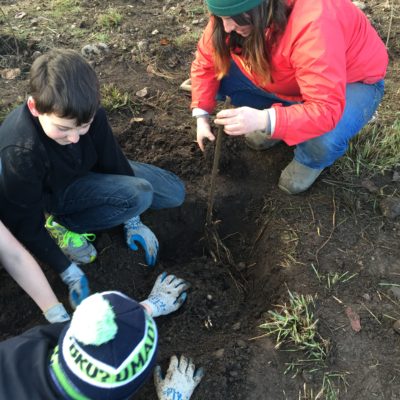 Last year and this year NOSC planned a full day field trip experience for the entire 6th grade. Students were divided into four groups and each group rotated through four activities.
Last year and this year NOSC planned a full day field trip experience for the entire 6th grade. Students were divided into four groups and each group rotated through four activities.
- Visit the nursery to pot young, native vegetation to plant the following year.
- Plant last year’s potted plants along the riparian zone.
- Play some salmon games.
- Measure orchard trees to calculate how much carbon a tree of that size sequesters!
Kids brought sack lunches and had a great time at the farm. Working with NOSC has helped make my Environmental Stewardship Project much better than if it were just me planning it. So seek out partnerships where ever you can!
Here are some photos of the actvities kids have been doing at the Finnriver Farms:

